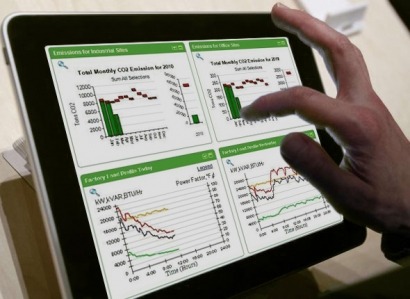
Continuous optimisation of production plants and processes is essential if they are to remain competitive in energy-intensive industries.Increasing efficiency plays a significant role in achieving this. Firms all around the world are required to increase their energy efficiency. In Germany this request has been written in law for production companies: a reduction of energy use by 1.3 percent a year between 2015 and 2017 and by 1.35 percent a year from 2018. An energy management system (EnMS) helps with operationalising of the target by recording consumption data, presenting consumption levels clearly and assisting with the determination of potential energy savings.
Financial incentives for early adopters of EnMS have been introduced in the last years: for example if an EnMS is certified in accordance with ISO standard DIN EN ISO 50001, the German government will grant reductions in energy and electricity taxes until 2022. These tax breaks are fundamental for energy-intensive companies. 2013 and 2014 are considered to be a transitional period. From 2015, it will be compulsory for large production companies to have a certified, fully operable EnMS in order to benefit from the tax concessions. The level of the actual tax concession will be calculated annually based on current electricity prices and a fixed formula.
Key feature: data acquisition and evaluation
What makes up an EnMS? The main components are regulations and management procedures which define strategic and operative corporate objectives. Other components are hardware and software that can be individually tailored to the relevant production processes. Measuring sensors for the media used plus electronic and remote data collectors are other key features.
Anyone wanting to introduce an EnMS should first carry out an inventory in terms of the organisational and technical requirements. This type of screening should be an analysis of the current situation of the company. Regular management reviews by management representatives will determine whether the targets set have been achieved. It is also compulsory to raise employees’ awareness regarding judicious use of energy and optimum operation of plants.
Drawing conclusions and implementing measures
The Plan-DO-Check-Act cycle provides for ongoing monitoring of key energy figures and their evaluation. This cycle allows, where necessary, the introduction of root cause analyses in cases where consumption is higher than expected from the basis established as part of the energy management system. This continuum assessment process leads directly to tangible energy savings. Be it technologies for heat recovery, improved insulation or temporary shutdown of non-essential systems - all measures promoting greater energy efficiency are evaluated and prioritised from a technical and economic viewpoint. TÜV SÜD provides support in the form of energy audits and cost-benefit analyses for long-term investment planning.
For additional information:

